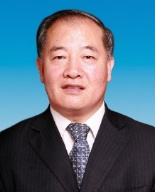
Guibin Jiang, Professor
State Key Laboratory of Environmental Chemistry and Ecotoxicology,
Research Center for Eco-Environmental Sciences,
Chinese Academy of Sciences, China
Title: New pollutants study in China: History, progress and challenges
Professor Jiang Guibin graduated from Shandong University in January 1982 and received his master's and doctoral degrees from the Research Center for Eco-Environmental Sciences, Chinese Academy of Sciences in 1987 and 1991. From 1989 to 1991 and 1994 to 1996, he was a visiting scholar and postdoctoral researcher at the National Research Council of Canada and the University of Antwerp, Belgium, respectively. Jiang’s research is mainly focused on analytical development, environmental fate, toxicology and health effects of persistent organic pollutants (POPs), endocrine disruptors, organometallic compounds, nanomaterials and new pollutants. He has contributed more than 1300 papers in peer-reviewed international scientific journals with 70,000 times of citations (web of science) and published 26 monographs. He is now a founding editor-in-chief of the ACS journal Environment & Health (E&H).
The governance of new pollutants has become the primary policy for environmental protection in China. New pollutant is an emerging scientific term, in analogy to contaminants of emerging concern, which refers to any synthetic or naturally occurring chemical or micro-organism that can cause significant known, or suspected toxic effects and health hazards when deposited in the environment. At present, the new pollutant analogues of extensive concern include persistent organic pollutants, endocrine disruptor compounds, and antibiotics. In general, the rapid growth in the use of synthetic chemicals is the underlying cause of the new pollutant issue. A significant number of chemical substances that are environmentally persistent, bio-accumulative and toxic are becoming a potential threat to the ecosystem and public health. International scientific research on New Pollutants has been developing rapidly in the 2000s, and it is well recognized that the rapid development of analytical instrumentation and analytical techniques has been an intrinsic driving force. As quoted from a presentative review article (Science, 2020, 367, 388): “Along with the increased use of chemicals in commerce and the advances in analytical methodology, rising attention is being paid to a variety of chemicals that have not been detected and are thereby not regulated”. It is also linked with the research on traditional environment pollutants, uniting the efforts of Chinese scholars for decades. For instance, the studies on screening and control for environmental endocrine disruptors were funded by the National 863 Program since 1999. A prospective exploration of the pollution characteristics, interfacial behavior, and health effects of emerging pollutants (i.e., PBDEs, PFAS and SCCP) has been realized with the financial support of the National 973 Program during 2003-2018. Basic research is a systemic endeavor that could be a key underpinning of the New Pollutants governance initiative. Many topics of this international toxicology conference, such as analytical toxicology, computational toxicology, biochemical and molecular toxicology, epigenetic toxicology, drug and food safety and risk assessment, as well as alternative approaches in toxicology, are elements that should be focused on for support in basic science research on New Pollutants. Along with the development of new approach methodologies such as machine learning and big data analytics, high-throughput toxicology testing, quantitative structure-property relationship modeling, and stem cell research will play a critical role. Future challenges also lie in a number of areas, for instance, the identification of key toxicants from complex matrices, the scientific assessment of the effects and mechanisms of combined exposures, the population exposure levels and safety thresholds for new pollutants, and the causal links between environmental exposures and ecological/health risks.

Thomas Hartung, Professor
1 Center for Alternatives to Animal Testing (CAAT), Johns Hopkins University, Bloomberg School of Public Health, Baltimore, MD, USA;
2 CAAT Europe, University of Konstanz, Konstanz, Germany
Title: Toxicology – the Now, the New and the Next
Thomas Hartung, MD PhD, is professor at Johns Hopkins Bloomberg School of Public Health in Environmental Health & Engineering as well as Molecular Microbiology and Immunology, the Whiting School of Engineering and the School of Medicine In Cellular and Molecular Medicine, as well as Georgetown University, Washington D.C., in Environmental Metrology and Policy, and University of Konstanz, Germany, in Pharmacology and Toxicology; he also is Director of Centers for Alternatives to Animal Testing (CAAT) in the US and Europe and Field Chief Editor of Frontiers in AI. He authored 730+ scientific publications with 52,000+ citations (h-index 124) and his COURSERA toxicology classes had 22,000+ active learners.
Toxicology stands at a historic inflection point. In the wake of technological innovation, mounting societal demands, and a pressing need for human relevance, the discipline is undergoing a profound transformation. This keynote will reflect on the Now—the current state of toxicological science, still heavily reliant on animal testing, fragmented data, and limited human predictivity. It will then pivot to the New—emerging paradigms that redefine toxicology through new approach methodologies (NAMs), including organoid(-on-chip) systems, integrated omics, high-content imaging, and artificial intelligence. These tools are already reshaping regulatory frameworks and enabling evidence-based assessments rooted in mechanistic insights and human biology. Building trust into them and their formal validation, however, represent major challenges. Finally, the Next will be outlined: a bold vision for a predictive, preventive, and personalized toxicology. This includes the integration of microphysiological systems (MPS), exposomics, and agentic AI into a global infrastructure for health risk assessment—aiming ultimately at a Human Exposome Project and Green Toxicology, i.e., benign-by-design chemicals and early testing in product development. Emphasis will be placed on establishing reproducibility standards (e.g., GCCP 2.0, GIVReSt), trust-building in AI applications, and a shift toward probabilistic, systems-based assessments.The keynote will also highlight the organizational and cultural shifts needed to accelerate this transition—from validation bottlenecks to transdisciplinary collaboration and public-private partnerships. By connecting scientific innovation with regulatory foresight, toxicology can lead the way toward a truly 21st-century biomedical and environmental health science.

Marc Pallardy, Professor
Dean of the Faculty of Pharmacy at University Paris-Saclay
Title: 50 years of Immunotoxicology: Past, present and future
Full professor and head of the Department of toxicology (Faculty of Pharmacy, University of Paris-Saclay) since 1997. Head of the team 2 “Drug and Chemical Allergy, Immunotoxicology and Immunopathology”, INSERM UMR 996. Member of the EUROTOX Executive committee and chairman of the EUROTOX Education committee. Member of the HESI board of trustees and co-chairman of the “Immunogenicity Technical Committee”. He has chaired the IMI ABIRISK consortium on the immunogenicity of therapeutic proteins (2012-2018).
He was Dean of the Faculty of Pharmacy, University Paris-Saclay from 2015 to 2025 and ViceDean for research from 2000 to 2015.Marc Pallardy has 185 publications in international peer-reviewed journals and more than 120 invited presentations.
Immunotoxicology is a discipline that studies the interactions between chemical, physical or biological substances and the immune system. Where does the term "Immunotoxicology" come from? It is commonly accepted that the origin of taking-into-account the effects on the immune system linked to exposure to environmental products is a publication from the RIVM at the end of the 1970s (Vos JG. CRC Crit Rev Toxicol. 1977). This publication primarily concerned immunosuppression and its possible consequences on human health. As a result, the bulk of research for many years concerned understanding the mechanisms of immunosuppression to environmental pollutants (dioxin, PCB, HPA, etc.) and developing assessment models. However, it is only very recently that exposure to environmental products has been linked to measurable effects on human health with PFAS and upper airborne infections but also the recent classification of PFOA in Group 1 of the IARC classification of carcinogens, partly linked to its immunosuppressive mechanisms.
But the understanding of immunity, the discovery of cytokines/chemokines and their production in recombinant form, the culture of immune cells, and the identification of numerous immune cells using monoclonal antibodies have made possible to address other aspects of immunotoxicology. This is the case for allergy mechanisms with the emergence of the pi-concept developed by W. Pichler and the identification of T lymphocytes recognizing small molecules such as beta-lactams. But understanding immunotoxic effects over time is also achieved through accidents or side effects linked to the use of products that modulate immunity: therapeutic antibodies and "cytokine release" "immune checkpoint inhibitors" and "autoimmune" diseases. Recent advances in research have finally made possible to identify the “Key Characteristics” that allow the identification of an immunotoxic product and also to define an AOP (Adverse Outcome Pathway) for skin allergy following exposure to chemical products.
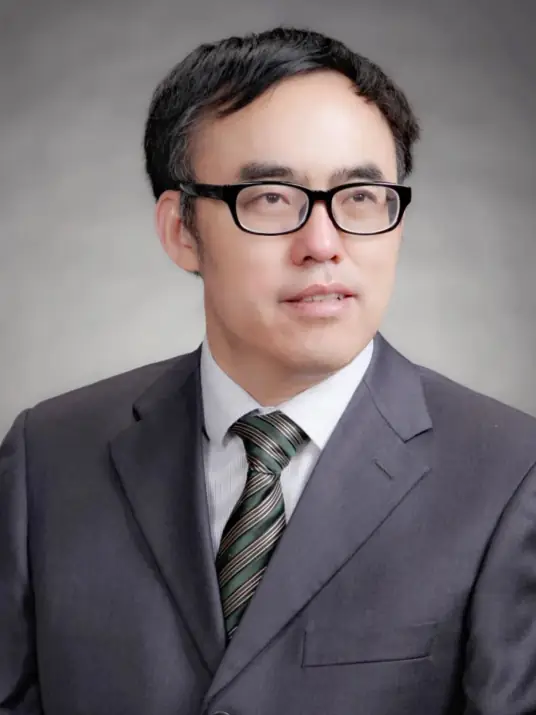
Lin Lu, Professor
Academician of Chinese Academy of Sciences
Chairman of Beijing Returned Overseas Chinese Federation
Director of National Medical Center for Mental Disorders
President of Shandong First Medical University
Title: Medical Potential of Cannabis and Psychedelics: Policy, Challenges and Future Direction
Prof. Lin Lu also works as member of International Narcotics Control Board, the director of National Clinical Research Center for Mental Disorders in China, and Vice President of the Chinese Preventive Medicine Association. His research focuses on the clinical diagnosis and treatment techniques as well as pathogenesis of mental diseases, and has made a series of achievements of great significance. He has published over 400 peer-reviewed articles with a total citation of more than 35000 times.
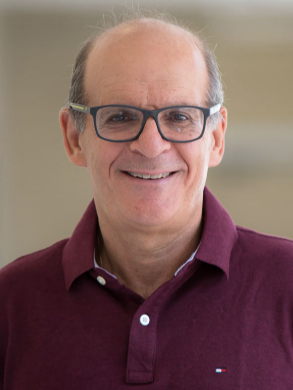
Michael Aschner, Professor
Department of Molecular Pharmacology, Albert Einstein College of Medicine, the USA, michael.aschner@einsteinmed.edu
Title: A 40 Year journey on the neurotoxicity of heavy metals: From worms to humans
Dr. Aschner will focus on several topics related to pertinent public health issues in China, namely exposures to mercury and manganese. He will address to role of: (1) modulation of C. elegans genes (aat, skn-1, daf-16) that are homologous to mammalian regulators of methylmercury (MeHg) uptake and cellular resistance will modify dopaminergic neurodegeneration in response to mercury exposure, (2) Nrf2 (a master regulator of antioxidant responses) in coordinating the upregulation of cytoprotective genes that combat mercury-induced oxidative injury, and genetic and biochemical changes that negatively impact upon Nrf2 function, (3) PARK2, a strong PD genetic risk factor, in altering neuronal vulnerability to modifiers of cellular manganese status, particularly at the level of mitochondrial dysfunction and oxidative stress. He will emphasize key findings from his 40-year scientific career that (1) shed novel mechanistic insight into metal-induced neurodegeneration; (2) identify targets for genetic or pharmacologic modulation of neurodegenerative disorders; (3) increase knowledge of the pathway involved in oxidative stress; (4) develop improved research models for human disease using knowledge of environmental sciences.
Over the past four decades, research led by Dr. Michael Aschner has fundamentally advanced our understanding of heavy metal neurotoxicity across biological systems—from simple invertebrate models to complex mammalian brains. This body of work has elucidated the molecular, cellular, and systemic effects of metals such as methylmercury, lead, manganese, and arsenic, leveraging a multidisciplinary toolkit spanning C. elegans, rodents, and human studies. Pioneering use of C. elegans enabled high-throughput insights into metal-induced oxidative stress, mitochondrial dysfunction, and dopaminergic neurodegeneration, offering mechanistic parallels to human neuropathologies such as Parkinson’s disease. In parallel, translational investigations have characterized critical windows of susceptibility, neurodevelopmental impacts, and gene-environment interactions in mammalian and human populations. Through integration of molecular neurobiology, toxicogenomics, and epidemiology, this research continuum has informed risk assessment, therapeutic targeting, and public health policy. Dr. Aschner’s work exemplifies the power of model organisms in uncovering conserved neurotoxic pathways, laying the foundation for precision neurotoxicology in the era of environmental health.
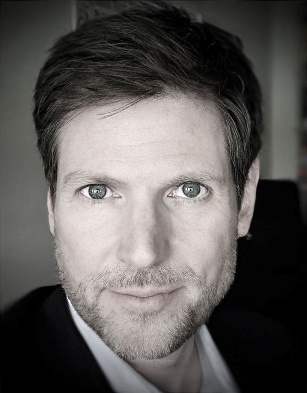
Robert Landsiedel
BASF, Germany, President of German Toxicology Society
Title: Avoiding a reproducibility crisis in regulatory toxicology – on the fundamental role of standardisation and ring trials
Robert Landsiedel is Vice President of special toxicology at BASF SE in Ludwigshafen am Rhein, Germany. He previously worked for BASF in development, regulatory and management roles in the USA and in Japan. He is an associate professor (Privatdozent) at the Free University of Berlin and has further teaching positions in Leipzig and Landau. His team at BASF is performing more than 500 regulatory toxicological studies per year under GLP, GIVIMP and ISO17020 as well as screenings for product development. In addition, they are developing new toxicological methods and testing strategies. They have received more than 20 external grants (German BMBF- and EU-funded) and their work has been recognized by several awards including the German Research Award for the development of alternative methods, German GT-Toxicology Award, the Responsible Care Award of the European Chemical Industry Council (Cefic) and the Herbert E. Stokinger Awards of the American Conference of Governmental Industrial Hygienists (ACGIH). Robert received a doctorate degree in chemistry (Dr. rer. nat.), a postgraduate degree in toxicology, and a habilitation in pharmacology and toxicology. He is a Diplomate of the American Board of Toxicology (DABT) and a Fellow of American Academy of Toxicological Sciences (FATS). He was appointed member of the European Commission’s Scientific Committee for Occupational Exposure Levels (SCOEL) where he chaired the methodology working group until the Committee’s decommissioning in 2019. Currently he is the chair for human toxicology of German National Hub within the "Partnership for the Assessment of Risk from Chemicals (PARC), the chairman of the German Toxicology Society (GT) and vice-president of the German Society for experimental and clinical Pharmacology and Toxicology (DGPT).
The ongoing transition from chemical hazard and risk assessment based on animal studies to assessment relying mostly on non-animal data, requires a multitude of novel experimental methods, and this means that guidance on the validation and standardization of test methods intended for international applicability and acceptance needs to be updated. These so-called new approach methodologies (NAMs) must be applicable to the chemical regulatory domain and provide reliable data which are relevant to hazard and risk assessment. Confidence in and use of NAMs will depend on their reliability and relevance, and both are thoroughly assessed by validation. Validation demands, however, time and resources. As updates on validation guidance are conducted, the valuable components must be kept: Reliable data are and will remain fundamental. In 2016 the scientific community was made aware of the general crisis in scientific reproducibility - validated methods must not fall into this. In this commentary, we emphasize the central importance of ring trials in the validation of experimental methods. Ring trials are sometimes considered to be a major hold-up with little value added to the validation. Here we clarify that ring trials are indispensable to demonstrate the robustness and reproducibility of a new method. Further, that methods do fail in method transfer and ring trials due to different stumbling blocks, but these provide learnings to ensure the robustness of new methods. At the same time, we identify what it would take to perform ring trials more efficiently, and how ring trials fit into the much-needed update to the guidance on the validation of NAMs.
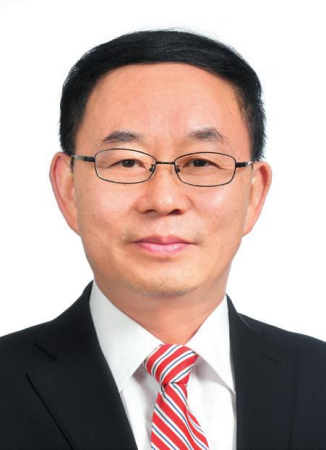
Yuliang Zhao
Chinese Academy of Sciences, China
Title: Nanotoxicology: Expanding the cognitive boundaries of classical toxicology
Professor Zhao is a Distinguished Professor and an Academician of the Chinese Academy of Sciences. He currently serves as the President of the Chinese Society for Biomaterials, the President of the GBA National Institute for Nanotechnology Innovation (CanNano), and the Director of the Key Laboratory for Nanotechnology Products Evaluation and Regulation under the National Medical Products Administration (NMPA, China’s FDA). Professor Zhao is a pioneer in nanotoxicology research, focusing on the toxicological chemistry of nano-biomaterials. His work aims to elucidate how engineered nano-biomaterials, at the nanoscale, interact with cells, tissues, and biomolecules, and how these interactions translate into biological effects in vivo. He has published 659 peer-reviewed articles in international journals, with over 85,000 citations and an H-index of 153 (Google Scholar). He is the author of Nanotoxicology, the first global textbook on the subject, published in the United States in 2007. From 2006 to 2010, he led a team of experts from 16 universities to develop a comprehensive 10-volume book series on nanotoxicology. This seminal work has significantly advanced the understanding of nanomaterial safety and played a pivotal role in shaping evaluation protocols, particularly in facilitating the regulatory approval of nanomedicine and nano-device products by the NMPA (China’s FDA).
Nanotoxicology integrates fundamental chemical principles with biological insights to elucidate the mechanisms underlying the toxicological effects of materials at the nanoscale. As a rapidly evolving frontier in toxicology, nanotoxicology has reshaped our understanding of toxicity, with broad implications across toxicology, biomaterials, medicine, and drug delivery. Over the past two decades, our research has uncovered pivotal phenomena—including size-dependent toxicity, protein corona formation, the stealth effect, and the far-reaching effect—that have redefined the paradigms of nanomaterial safety assessment and the rational design of functional nanomaterials. This presentation aims to expand the boundaries of classical toxicology by addressing the mechanisms underlying nanotoxicological phenomena, with a focus on how nano-factors such as nano-sizes, nano-shapes, nano-surface (like surface defects electron transfer dynamics at nano–bio interfaces), AI-assisted theoretical modeling, proposing and experimentally validating a comprehensive theoretical framework for nanotoxicology. This work seeks to redefine nanotoxicological principles, fostering safer biomedical nanomaterials by rational design to advance next-generation nanomedicines and biomedical applications.

Shana J. Sturla
ETH Zürich, Switzerland, American Chemical Society Division of Chemical Toxicology
Title: Advancing chemical research in toxicology: From genotoxicity to gut microbial metabolism
Prof. Shana J. Sturla leads the Laboratory of Toxicology at the ETH Zürich in Switzerland. The goal of her research is to promote chemical, food and drug safety by elucidating the chemical basis of mutagenesis and toxicity, using innovative bioanalysis strategies for in vitro testing. Key areas that could be presented address environmental toxicants related to human disease, DNA damage and mutagenesis, drug resistance in cancer therapy and biotransformation of xenobiotics by human gut microbiota. Prof. Sturla is the editor-in-chief of Chemical Research in Toxicology. Chemical Research in Toxicology provides knowledge and innovative approaches needed to promote intelligent solutions for human and environmental health on the basis of a chemical and molecular understanding of toxicity. This research relies on creating and applying cutting-edge bioanalytical tools such as mass spectrometry for metabolomics and proteomics, and genome-wide analysis.
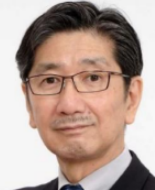
Jun Kanno
National Institute of Health Sciences (NIHS), Visiting Researcher, Emeritus Researcher;
Nissan Tamagawa Hospital, Pathology, Medical Director; Visiting Professor, University of Tsukuba, Faculty of Medicine;
Visiting Research Fellow, Systems Biology Institute (SBI)
Title: "Modern Toxicology" and “Poison Science”–An inseparable pair to sustain Modern Civilization
From 1986, Dr. Kanno served on the faculty at Pathology Department of Tokyo Medical and Dental University and was a Visiting Scientist of NIEHS (1991–1993). In 1997, he moved to National Institute of Health Sciences (NIHS) as a section chief, and from 2002 as the Head of the Division of Cellular & Molecular Toxicology, specialize in general and experimental pathology and toxicology. He served as the Director of the Japan Bioassay Research Center (2016-2019), and from 2020, he is the Visiting Researcher/ Emeritus Researcher of the NIHS, from 2021, Medical Director of Pathology at Nissan Tamagawa Hospital, and from 2023, Visiting Senior Fellow of the Systems Biology Institute. His research includes molecular toxicology on “signal toxicity” of central nervous system, “Percellome” toxicogenomics and nanomatrials toxicology. He has served as the President of Japanese Society of Toxicology and of IUTOX.
Since time immemorial, humans have consumed plants, animals, and other prey from the mountains and seas, and accumulated knowledge about what is safe to eat and touch. This knowledge was the beginning of the "science" of "poison ". "Poison Science" studies the biological mechanisms of poisons down to the molecular level along with the making of the Poison List. In this process, a variety of test methods have developed.
In contrast, “Modern Toxicology" is a scholarly system to prevent the new products created by civilization from causing harm to the civilized society. Modern civilization creates new products to make life better for everyone. However, such products bring harm to people and/or environment that their creators do not intend.
“Modern Toxicology” uses the knowledge and experience of “Poison Science” to identify these unintended adverse effects of the new products and provide such information to the creators/manufacturers and consumers before the new products cause harm to the civilized society; this process brings a win-win situation to both industrial promotion and safety assurance.
Here, as an example, we would like to present the relation between asbestos (poison) and carbon nanotube (new product), and our approach to comprehensively analyzing unknown toxicities of new products (including PFAS) using Percellome Toxicogenomics.

Marlies De Boeck, PhD
Johnson & Johnson Innovative Medicine Belgium
Title: Taking Global Submissions to the next level
Dr. Marlies De Boeck is currently EU head of Submissions within Preclinical Sciences & Translational Safety at Johnson & Johnson Innovative Medicine (J&JIM), in Beerse, Belgium. She is leading a team of nonclinical scientific writers coordinating global regulatory submissions across the different regions in the context of clinical trial and marketing applications throughout the pharmaceutical development phases and covering different therapeutic indications and modalities. She combines drug development, regulatory strategy and framework expertise to drive worldwide submissions.
During 20+ years at J&JIM, Marlies has filled several roles in the Preclinical Safety Department, including positions within genetic toxicology, discovery safety screening, project management, nonclinical writing and as study director, nonclinical safety project leader and people manager. She started her career at J&JIM as a postdoctoral researcher. Marlies holds an MS in Biology and a PhD in Sciences from the Free University of Brussels (VUB).
Marlies has been active in scientific societies including the European and Belgian Environmental Mutagen Society (EEMS, BEMS) and has been involved in collaborative scientific initiatives including those led by the European Federation of Pharmaceutical Industries and Associations (EFPIA), International Workshop on Genotoxicity Testing (IWGT) and Organization for Economic Cooperation and Development (OECD).
In the pharmaceutical industry, nonclinical submissions are essential for demonstrating the safety and efficacy of new drugs and other therapies, supporting the transition from preclinical to clinical development phases, and ultimately securing market authorization. They involve providing nonclinical pharmacology, pharmacokinetics and toxicology study data summaries, their integration and interpretation to global regulatory agencies.
The regulatory requirements are primarily driven by the International Council for Harmonisation (ICH) guidelines, yet regional differences sometimes exist in the interpretation of these guidelines. In addition, for the emerging novel modality therapies, existing guidelines may not fully inform the nonclinical testing approach. This may lead to specific nonclinical packages being prepared to adhere to country specific requirements and may require prior discussion and agreement with health authorities. An example of such specific standards is the Standard for Exchange of Nonclinical Data (SEND) needed for USA FDA submissions which are recently also being requested by some other countries.
To increase operational efficiency, consistency and robustness of these submissions, Johson & Johnson Innovative Medicine is exploring innovative solutions by integrating advanced AI/ML technologies. These tools aim to streamline the generation of nonclinical summary documents and enhance their quality control, ensuring faster, more compliant, and globally harmonized submissions. This approach represents a significant leap forward—taking nonclinical submission processes to the next level and paving the way for more agile and intelligent regulatory pathways worldwide.